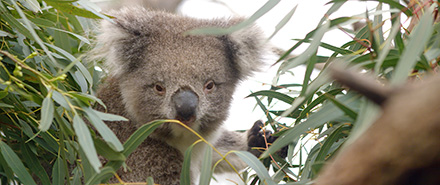Here we go again.
Logging has been stopped in parts of the proposed Great Koala National Park on the New South Wales Mid North Coast while the state government determines the impact on koalas and timber industry jobs.
The halt, announced on Tuesday, covers 106 koala “hubs” across more than 8400 hectares of forest within the proposed national park, which is being gazetted in the region.
While 8400 hectares does not seem a huge amount, that’s just this time.
Salami tactics – taking a bit at a time until nothing is left – will surely be introduced. Just 8400ha this time, 6570ha next time, 9875ha the next time, and so on until there is nothing left.
In Victoria, the State Government in part, used protection of the rarely seen Leadbeater’s Possum as the basis to shut down the native timber industry.
In Western Australia, the excuse was it’s the science, without saying what the science said.
But the green lobby has in New South Wales played the greatest winning hand possible. Forget science, forget sustainability, forget the timber industry’s potential to provide a renewable resource while actually protecting koalas.
All the green lobby had to do is put up a picture of a koala, say they are at risk of extinction, and everything else, every bit of logic goes out the window.
No one is opposed to koalas. No one is anti-koala.
As Forestry Australia President Dr Michelle Freeman says, we all care about protecting koalas.
But as she and others keep pointing out, it is “simplistic to suggest that locking away forests is the great panacea for saving koalas from extinction”.
Management is the key, not lock it up and leave it.
It is also not consistent with the science to point the finger of blame at the timber harvesting industry.
Peter Rutherford from the South East Timber Association and a well-respected forestry scientist of 40 years standing says there are many myths surround koala conservation in NSW, including one perpetuated by activist NGOs, which claims the population of koalas in NSW at the time of European arrival was 10 million.
This, he says, is used to support claims that koalas will be extinct in NSW by 2050 unless more koala habitat is “permanently protected”.
He says these claims are more to do with activist fund raising and campaigns to transfer state forests to national parks, than sustainable koala management.
Timber NSW General Manager Maree McCaskill has said that there is considerable evidence that there was not a colony of koalas in the Coffs Harbour area, for example, before the early 1960s.
Dr Brad Law, an eminent forest ecologist with NSW Department of Primary Industries has developed a new method of identifying habitats containing koalas. His work has shown that pre 2019/20 wildfires, the koala was found in equal numbers in National Parks and working State forests around the Coffs Harbour region and the north coast generally.
It seems forest harvesting and management in State forests does not impact on koala numbers and there is evidence to show that they like regrowth forests because of the quality of the young eucalypt leaves.
And as former senior NSW Forestry Commission professional forester Vic Jurskis has pointed out, koala numbers increase in dense regrowth forests created by intensive harvesting.
He says that by 1991 koalas were three times more abundant in regrowth than in old growth forests. But in 1995 regrowth forests at Pine Creek were locked up to save koalas.
It simply doesn’t make any sense. Forestry and the koala population can and do exist in relative harmony.
Experience shows that declaring a National Park does not equal koala population growth.
But the conservation lobby says don’t look at the history, don’t look at the science. Just keep your eyes on the cute koala and everything will be fine.







